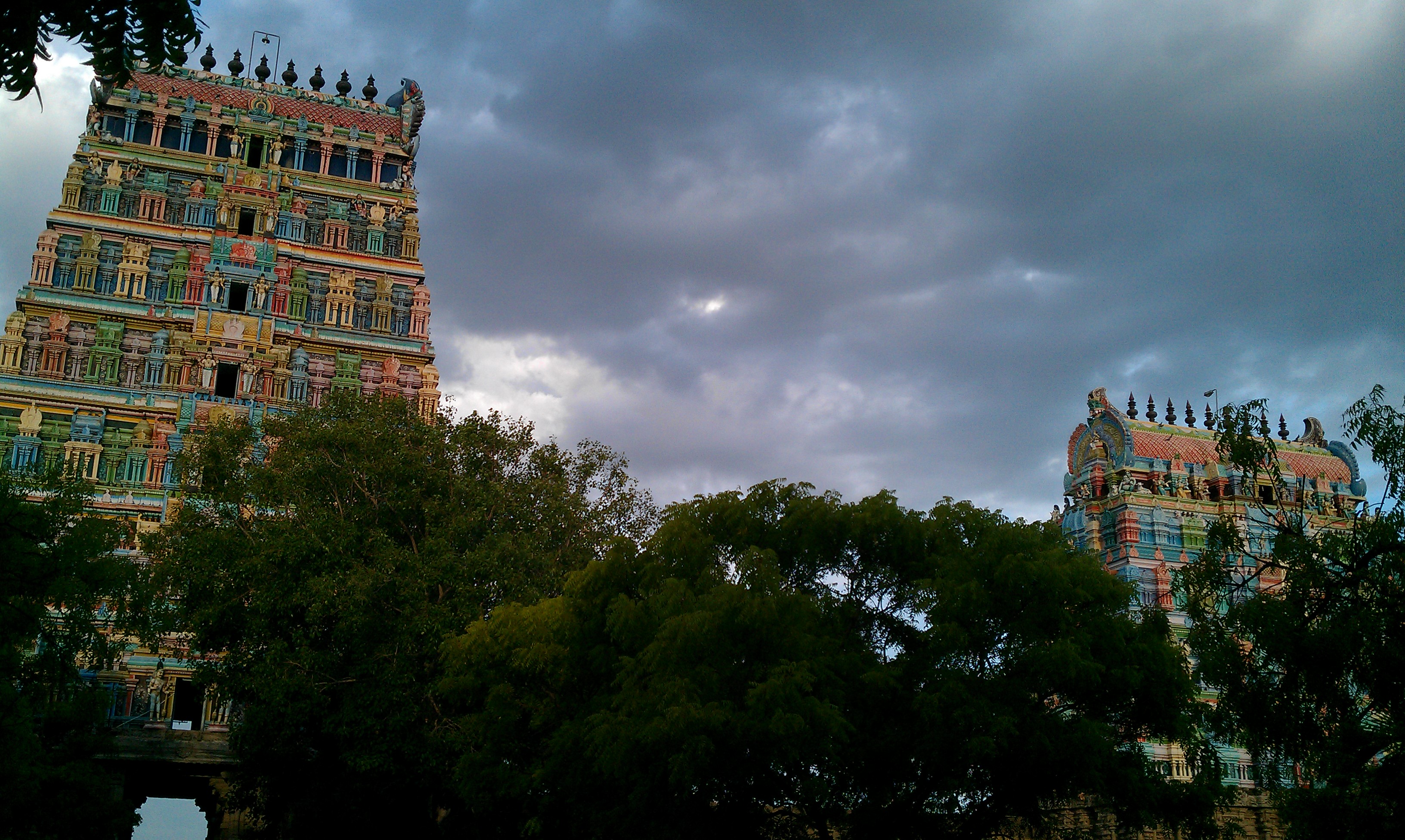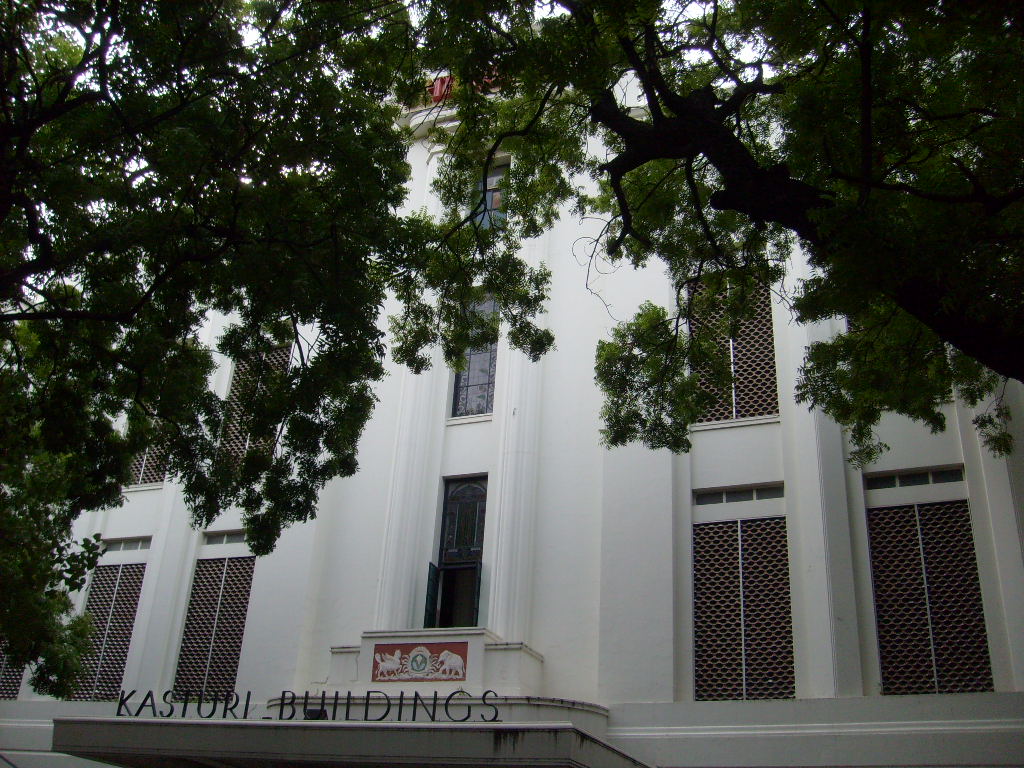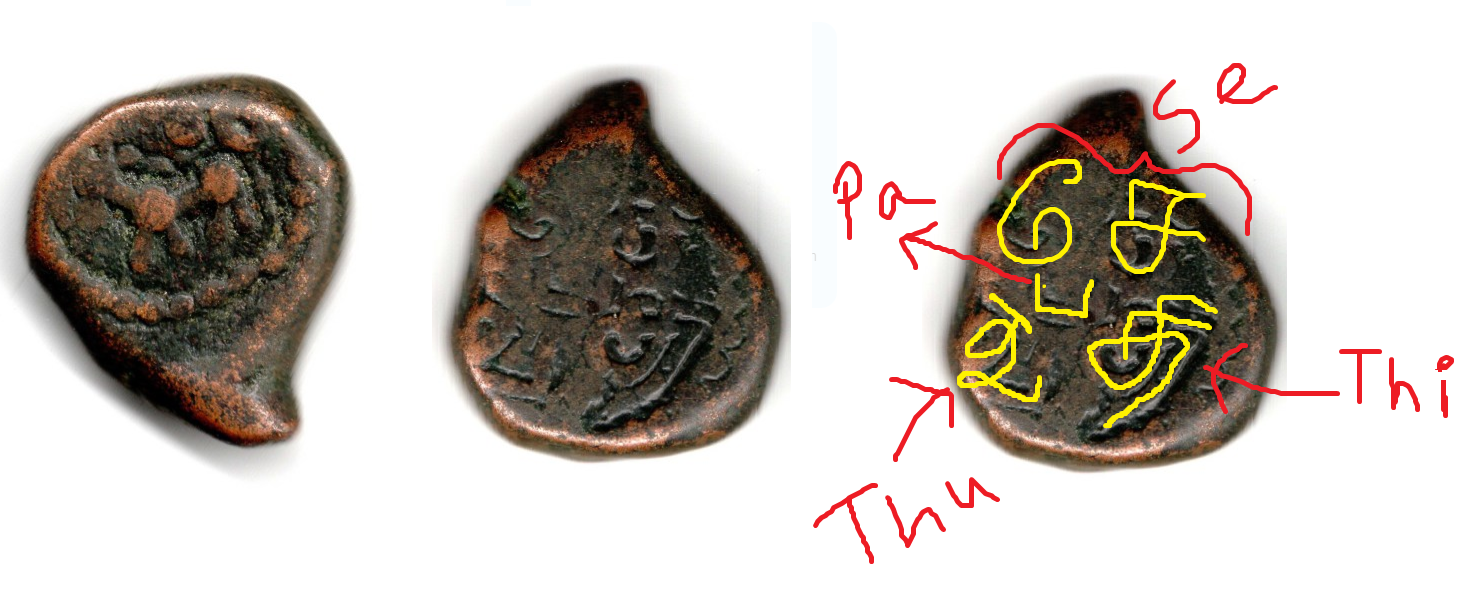|
Uthirakosamangai
Uthirakosamangai, also known as Mangalanatha Swamy temple, is a Shaiva temple situated near Ramanathapuram in the Ramanathapuram district of Tamil Nadu. The temple is much older and the structure as it exists today is believed to be built by the Pandya kings, Achutappa Nayak (1529–1542 CE), Muthuveerappar and other kings of Ramanthapuram at various times. The temple has been glorified by the hymns of 9th-century saint Manickavasagar and 15th-century saint Arunagirinathar. The temple is considered sacred along the lines of Ramanathapuram, Sethu Madhava Theertham and Lakshmana Theertham. The temple is a prominent tourist destination of Ramanathapuram district. The temple has numerous shrines, with those of Mangalanathar, Mangalambigai and Natarajar being the most prominent. The temple houses a tall ancient ''maragatha'' Nataraja idol carved out of emerald, being the one of its kind. The temple has six daily rituals at various times from 5:30 a.m. to 8 p.m., and si ... [...More Info...] [...Related Items...] OR: [Wikipedia] [Google] [Baidu] |
Ramanathapuram District
Ramanathapuram District, also known as Ramnad District, is one of the 38 districts an administrative districts of Tamil Nadu state in southern India. The old Ramanathapuram District consists of Present day Virudhunagar and Sivagangai districts, it touches the Western ghats and bordered with the state of Kerala and east by Bay of Bengal. It was the largest district on that time. The town of Ramanathapuram is the district headquarters. Ramanthapuram District has an area of 4,123 km2. It is bounded on the north by Sivaganga District, on the northeast by Pudukkottai District, on the east by the Palk Strait, on the south by the Gulf of Mannar, on the west by Thoothukudi District, and on the northwest by Virudhunagar District. The district contains the Pamban Bridge, an east–west chain of low islands and shallow reefs that extend between India and the island nation of Sri Lanka, and separate the Palk Strait from the Gulf of Mannar. The Palk Strait is navigable only by shallow-dra ... [...More Info...] [...Related Items...] OR: [Wikipedia] [Google] [Baidu] |
Ramanathapuram
Ramanathapuram (), also known as Ramnad, is a town and a municipality in Ramanathapuram district in the Indian state of Tamil Nadu. It is the administrative headquarters of Ramanathapuram district and the second largest town (by population) in Ramanathapuram district. History The region is well known since Puranic ages. The estate of Ramnad included the Hindu holy island city of Rameswaram, from where, legend has it that the Hindu god Rama launched his invasion of Ravana's Lanka. On the conclusion of the war and Rama's success in it, he appointed a ''Sethupathi'' or "lord of the bridge" to guard the way to the island. The "bridge" referred to here is the legendary Rama's Bridge which was believed to have been constructed by Rama. The chieftains of Ramnad were entrusted with the responsibility of protecting the bridge, hence the appellation. Historically, for a short period, this area had been under the Chola Dynasty when Rajendra Chola I brought it under his territory i ... [...More Info...] [...Related Items...] OR: [Wikipedia] [Google] [Baidu] |
Manickavasagar
Manikkavacakar, or Maanikkavaasagar ''(Tamil: மாணிக்கவாசகர், "One whose words are like gems")'', was a 9th-century Tamil saint and poet who wrote '' Tiruvasakam'', a book of Shaiva hymns. Speculated to have been a minister to the Pandya king Varagunavarman II (c. 862 CE–885 CE) (also called ''Arimarthana Pandiyan''), he lived in Madurai. He is revered as one of the Nalvar (''"group of four"'' in Tamil), a set of four prominent Tamil saints alongside Appar, Sundarar and Sambandar. The other three contributed to the first seven volumes ( Tevaram) of the twelve-volume Saivite work Tirumurai, the key devotional text of Shaiva Siddhanta. Manikkavacakar's ''Tiruvasakam'' and Thirukkovaiyar form the eighth. These eight volumes are considered to be the ''Tamil Vedas'' by the Shaivites, and the four saints are revered as ''Samaya Kuravar'' (''religious preceptors'') His works are celebrated for their poetic expression of the anguish of being separat ... [...More Info...] [...Related Items...] OR: [Wikipedia] [Google] [Baidu] |
Murugan
Kartikeya ( sa, कार्त्तिकेय, Kārttikeya), also known as Skanda, Subrahmanya, Shanmukha (), and Murugan ( ta, முருகன்), is the Hindu god of war. He is the son of Parvati and Shiva, the brother of Ganesha and a god whose legends have many versions in Hinduism. Kartikeya has been an important deity in the Indian subcontinent since ancient times, worshipped as Mahasena and Kumara in North India and is predominantly worshipped in the state of Tamil Nadu and other parts of South India, Sri Lanka, Singapore, and Malaysia as Murugan. Murugan is widely regarded as the "God of the Tamil people". It has been postulated that the Tamil deity of Murugan was syncretised with the Vedic deity of Subrahmanya following the Sangam era. Both Muruga and Subrahmanya refer to Kartikeya. The iconography of Kartikeya varies significantly; he is typically represented as an ever-youthful man, riding or near an Indian peafowl, called Paravani, bearing a ... [...More Info...] [...Related Items...] OR: [Wikipedia] [Google] [Baidu] |
Lingam
A lingam ( sa, लिङ्ग , lit. "sign, symbol or mark"), sometimes referred to as linga or Shiva linga, is an abstract or aniconic representation of the Hindu god Shiva in Shaivism. It is typically the primary ''murti'' or devotional image in Hindu temples dedicated to Shiva, also found in smaller shrines, or as self-manifested natural objects. It is often represented within a disc-shaped platform, the '' yoni'' – its feminine counterpart, consisting of a flat element, horizontal compared to the vertical lingam, and designed to allow liquid offerings to drain away for collection. Together, they symbolize the merging of microcosmos and macrocosmos, the divine eternal process of creation and regeneration, and the union of the feminine and the masculine that recreates all of existence. The original meaning of ''lingam'' as "sign" is used in Shvetashvatara Upanishad, which says "Shiva, the Supreme Lord, has no liūga", liuga ( sa, लिऊग ) meaning he is t ... [...More Info...] [...Related Items...] OR: [Wikipedia] [Google] [Baidu] |
The Hindu
''The Hindu'' is an Indian English-language daily newspaper owned by The Hindu Group, headquartered in Chennai, Tamil Nadu. It began as a weekly in 1878 and became a daily in 1889. It is one of the Indian newspapers of record and the second most circulated English-language newspaper in India, after '' The Times of India''. , ''The Hindu'' is published from 21 locations across 11 states of India. ''The Hindu'' has been a family-owned newspaper since 1905, when it was purchased by S. Kasturi Ranga Iyengar from the original founders. It is now jointly owned by Iyengar's descendants, referred to as the "Kasturi family", who serve as the directors of the holding company. The current chairperson of the group is Malini Parthasarathy, a great-granddaughter of Iyengar. Except for a period of about two years, when S. Varadarajan held the editorship of the newspaper, the editorial positions of the paper were always held by members of the family or held under their direction. His ... [...More Info...] [...Related Items...] OR: [Wikipedia] [Google] [Baidu] |
Yali (Hindu Mythology)
Yali ( ta, யாளி, IAST: Yāḷi), also called Vyala, is a Hindu mythological creature, portrayed with the head and the body of a lion, the trunk and the tusks of an elephant, and sometimes bearing equine features. The creature is represented in many South Indian temples, often sculpted onto the pillars. There also exist variations of the creature, with it possessing the appendages of other beasts. It has sometimes been described as a ''leogryph'' (part-lion and part-griffin), with some bird-like features, with the trunk referred to as a proboscis. Iconography Descriptions of, and references to, yalis are ancient, but they became prominent in South Indian sculptures in the 16th century. Yalis were described to be more powerful than the lion, the tiger, or the elephant. In its iconography, the yali has a cat-like graceful body, but the head of a lion with the tusks of an elephant ( gaja), and the tail of a serpent. Sometimes, they have been shown standing on the back ... [...More Info...] [...Related Items...] OR: [Wikipedia] [Google] [Baidu] |
Ganesha
Ganesha ( sa, गणेश, ), also known as Ganapati, Vinayaka, and Pillaiyar, is one of the best-known and most worshipped deities in the Hindu pantheon and is the Supreme God in Ganapatya sect. His image is found throughout India. Hindu denominations worship him regardless of affiliations. Devotion to Ganesha is widely diffused and extends to Jains and Buddhists and includes Nepal, Sri Lanka, Thailand, Indonesia ( Java and Bali), Singapore, Malaysia, Philippines, and Bangladesh and in countries with large ethnic Indian populations including Fiji, Guyana, Mauritius, and Trinidad and Tobago. Although Ganesha has many attributes, he is readily identified by his elephant head. He is widely revered, more specifically, as the remover of obstacles and thought to bring good luck; the patron of arts and sciences; and the deva of intellect and wisdom. As the god of beginnings, he is honoured at the start of rites and ceremonies. Ganesha is also invoked as a patron of ... [...More Info...] [...Related Items...] OR: [Wikipedia] [Google] [Baidu] |
Tamil Nadu
Tamil Nadu (; , TN) is a state in southern India. It is the tenth largest Indian state by area and the sixth largest by population. Its capital and largest city is Chennai. Tamil Nadu is the home of the Tamil people, whose Tamil language—one of the longest surviving classical languages in the world—is widely spoken in the state and serves as its official language. The state lies in the southernmost part of the Indian peninsula, and is bordered by the Indian union territory of Puducherry and the states of Kerala, Karnataka, and Andhra Pradesh, as well as an international maritime border with Sri Lanka. It is bounded by the Western Ghats in the west, the Eastern Ghats in the north, the Bay of Bengal in the east, the Gulf of Mannar and Palk Strait to the south-east, and the Indian Ocean in the south. The at-large Tamilakam region that has been inhabited by Tamils was under several regimes, such as the Sangam era rulers of the Chera, Chola, and Pandya c ... [...More Info...] [...Related Items...] OR: [Wikipedia] [Google] [Baidu] |
Nandi (bull)
Nandi ( sa, नन्दि), also known as Nandikeshwara or Nandideva, is the bull vahana of the Hindu god Shiva. He is also the guardian deity of Kailash, the abode of Shiva. Almost all Shiva temples display stone-images of a seated Nandi, generally facing the main shrine. According to Saivite siddhantic tradition, he is considered as the chief guru of eight disciples of Nandinatha Sampradaya, namely, Sanaka, Sanatana, Sanandana, Sanatkumara, Tirumular, Vyagrapada, Patanjali, and Sivayoga Muni, who were sent in eight different directions, to spread the wisdom. The Cham Hindus of Vietnam believes that when they die, the Nandi will come and take their soul to the holy land of India from Vietnam. The Sanskrit word nandi ( sa, नन्दि) has the meaning of happy, joy, and satisfaction, the properties of divine guardian of Shiva- Nandi. It is recently documented, that the application of the name Nandi to the bull (Sanskrit: ''Vṛṣabha''), is in fact a developm ... [...More Info...] [...Related Items...] OR: [Wikipedia] [Google] [Baidu] |
Sethupathi
The Sethupathis are a Tamil clan of the Maravar community native to the Ramanathapuram and Sivaganga district of Tamil Nadu, India. They were from the 17th century considered independent kings who ruled the Ramnad kingdom, also known as '' Maravar country''. The male rulers of Ramnathapuram also bore the title of "Sethupathi" or "protector of the bridge", which was first granted to the first Sethupathi Raghunatha Kilavan by the Thanjavur Nayaks, the bridge here referring to the legendary sacred Rama's Bridge (Adam's Bridge), while female rulers bore the title "Nachiyar". Among the seventy two poligars (feudal title of chieftains under Nayaka rulers) of the region, the Sethupathi stood first. This special position was conferred not based upon the revenue that his kingdom generated but because of his military prowess. Back in the beginning of the 18th century, the Sethupathi ruler could mobilize a considerable army, about 30,000 to 40,000 strong at short notice (one week). ... [...More Info...] [...Related Items...] OR: [Wikipedia] [Google] [Baidu] |
Navagraha
Navagraha are nine heavenly bodies and deities that influence human life on Earth according to Hinduism and Hindu astrology. The term is derived from ''nava'' ( sa, नव "nine") and ''graha'' ( sa, ग्रह "planet, seizing, laying hold of, holding"). Note that the Earth, Uranus, Neptune and Pluto are excluded from the Navagraha,. However, the Sun is part of the Navagraha. In astrology, the term ''planet'' originally applied only to the five planets visible to the naked eye and excluded Earth. The term was later broadened, particularly in the Middle Ages, to include the sun and the moon (sometimes referred to as "lights"), making a total of seven planets. The seven days of the week in the Hindu calendar also correspond with the seven classical planets, and are named accordingly in most languages of the Indian subcontinent. Most Hindu temples around the world have a designated place dedicated to Navagraha worship. Planets, celestial bodies and lunar nodes Carnatic m ... [...More Info...] [...Related Items...] OR: [Wikipedia] [Google] [Baidu] |

_-_Copy.jpg)




_female_head.jpg)

